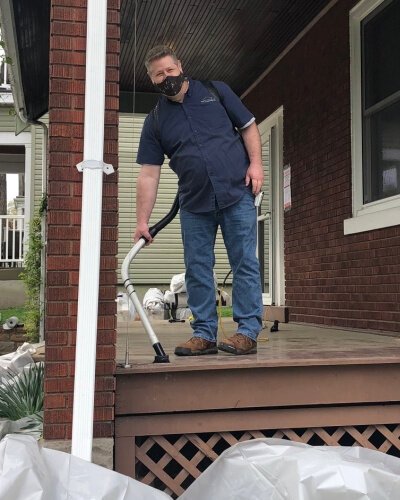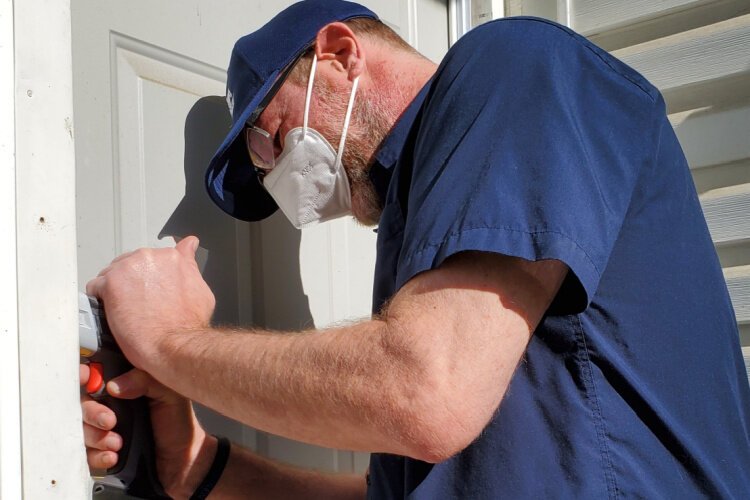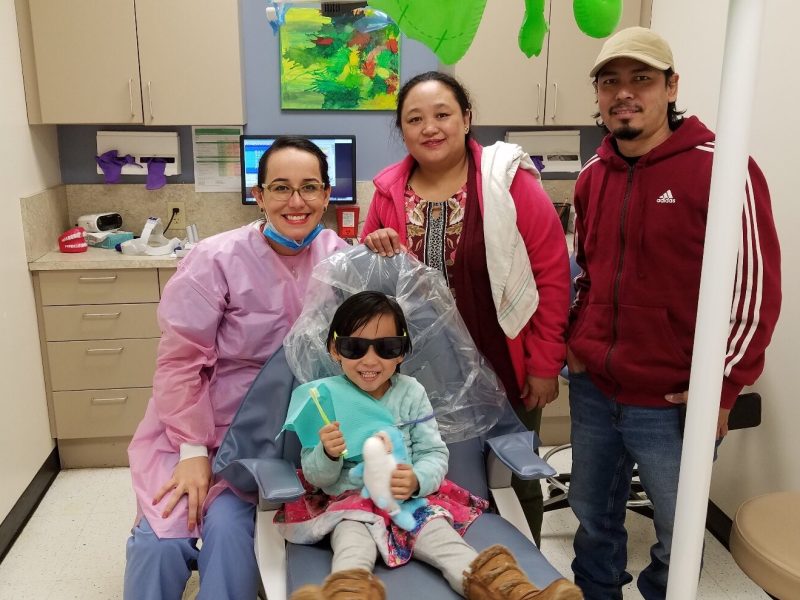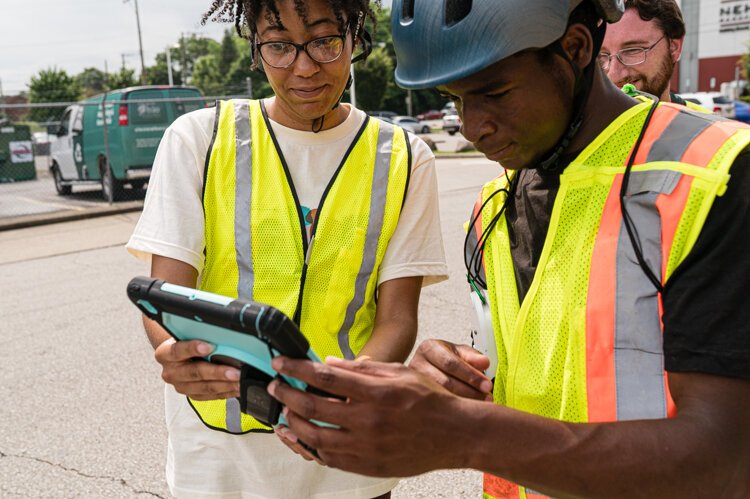Get the lead out: Take advantage of three grants aimed at saving children from lead poisoning
Covered in latex or water based paints applied by decades of homeowners, lead paint remnants remain hidden in the majority of American homes built prior to 1978.
Amit Bhattacharya began his work at the University of Cincinnati in 1980, developing a groundbreaking non-invasive strategy for measuring the effects of exposure to lead on children. By using a simple evaluation of gait and balance to assess damage to subjects’ bodies, he took advantage of a telltale sign of lead’s impacts in order to scientifically calculate its influence – and utilized the abundance of dilapidated housing in the Cincinnati area to procure his sample.
The Cincinnati Lead Study program is the longest running study of its kind in the world, tracking the progression of outcomes within a cohort of around 350 individuals from birth to today. It has monitored the physical consequences of lead exposure that occurred within participants’ childhood homes at regular intervals throughout their lives.
“Right now those children are about 40 years of age. I’ve been evaluating their balance and gait as well as their bone health,” says Bhattacharya, a former NASA researcher. “I wanted to quantify and characterize toxic chemicals in the human neurological system, and how those in turn impact their functional abilities. We found that early life exposure to lead caused impairment in balance, not only in the early years of their life, but even when they are approaching adulthood.”
Bhattacharya explains that, years ago, he was alerted by local clinicians that certain children were unable to navigate the stairs as they arrived for their physical examinations – pointing to a high volume of lead in their systems. “They would be coming down the steps and they would fumble and fall down. So they told me, ‘This case has a problem,’” he recalls.
Used since Greek and Roman times and long revered for its durability and easy-to-clean properties, lead paint has been known to cause damage to the human body for over 100 years. Many European nations took note at the turn of the 20th century and prohibited use of the toxic substance. Countries such as France, Belgium and Austria enacted restrictions or bans on lead paint use as early in 1909.
Conversely, lead based paint’s use in the U.S. did not peak until the 1920’s as American homeowners swapped out wallpaper for painted interiors.
These health-conscious Americans believed that by replacing the germ-permeable paper and glue with a more resistant and washable surface, they’d fend off Spanish Flu and other infectious diseases. Despite legislation elsewhere (and the fact that master painters had long since begun to feel the effects of lead in their systems), mid-century Americans still viewed lead poisoning as merely an industrial disease contracted by those who worked with the material regularly.
Manipulated by manufacturers’ advertisements espousing the sanitary nature of these paints, Americans continued to employ the use of oil based paints containing white lead until 1978 when it was banned amid public outcry following evidence of effects on the general populace – in particular young children, some of whom died after teething on crib rails coated in lead paint.
While the outlawing of lead paint prevented newer structures from being coated with it, lead paint’s potential for increased environmental volatility over time was yet unseen. Millions of homes sat aging with layers of it stuck to their very bones as it was viewed as a protective layering element that hindered decay. Now, generally covered in latex or water based paints that have been applied by subsequent generations of homeowners, lead paint remnants remain hidden within the majority of American homes built prior to 1978. They can reemerge under certain conditions causing major problems that last lifetimes.
As homes age and fall into states of disrepair, fine particles of decaying lead paint can be released through cracks in walls and along crumbling surfaces like windowsills and casings. These take to the air and settle along floors. Close to the ground and exploring their worlds, children at play in the dust are unaware of its toxicity and can breathe it in or even ingest it. Unfortunately, their proximity to the substance is not the only way in which they are more vulnerable.
Bhattacharya clarifies that the effects of lead on children are far more impactful than its consequences to adults. Due to their rapid development, children who have been exposed to lead are often left with lifelong neurological conditions that affect their ability to move properly. However, the noticeable issues with balance and gait that Bhattacharya relied upon for observation in his studies are just the tip of the iceberg – not the complete list by a long shot. And unfortunately, much of this damage is irreversible.
“Lead goes to the human body. It does not get out of the body. Lead moves from the circulation and, after a certain period, and it starts to move into the bone. When it goes to the bone, it stays there for decades,” explains Bhattacharya. He reveals that hormonal shifts such as those during pregnancy can release lead from the bones back into the blood, where it can in turn further impact the brain.
Stopping the impacts of lead poisoning on the entire community
“If they’re exposed to lead and if, God forbid, if they’re poisoned, there are repercussions not just in health care costs, but also in potential learning disability, attention deficit and issues with achievement and earning potential,” says Aaron Grant, senior project manager at People Working Cooperatively and chair of Hamilton County Lead and Healthy Homes Collaborative. “There’s all kinds of research that kind of maps out what can happen when kids have severe exposures.”
Grant’s vantage point is more social than scientific, although he gets it on a number of levels. He acutely understands the heartbreaking consequences of lead exposure on individuals, and is personally certified in the tricky and costly process of lead abatement as part of his work with PWC. But his overarching agenda is to stop the impacts of lead poisoning on the entire community, therefore eliminating larger societal issues down the road.
Grant is pleased that consistent efforts from his and other organizations have resulted in a sudden influx of funding that’s being rigorously allocated to counter the immediate and ongoing issues with lead faced by Cincinnati and its surrounding communities. He acknowledges that it’s not an easy problem to remedy, due to the widespread nature as well as the sheer expense of lead abatement. Still, he’s optimistically looking toward the future benefits to all, thanks to funding that’s finally coming in from not one but three different sources.
“So, Hamilton County has a grant to serve their jurisdiction. The city of Cincinnati has a grant from HUD to do something very similar. And then also the Department of Health works with the Ohio Department of Medicaid to have their own lead abatement program throughout the state of Ohio,” says Grant. “And we at PWC are administering that on behalf of ODH throughout Hamilton County. We’re actually the clearinghouse for all intake applications for people that are interested in learning more may or may want to enroll,” says Grant.
According to Grant, three quarters of the homes in Hamilton County were built before 1978. In order to qualify for the programs, a family needs to have a child under six years of age living in the home or visiting frequently. Simple math points to more than 30,000 households in Hamilton County alone that would qualify for one of these programs.
“Like many other kinds of health challenges, it disproportionately affects low income families – particularly low income families of color, people that are living in substandard housing that is deteriorating,” informs Grant.
Emily Wanzer is project manager for the grant program at Hamilton County Public Health and serves along with Grant on the Hamilton County Lead and Healthy Homes Collaborative.
“There are communities within Hamilton County with higher poverty rates, higher percentages of older housing in disrepair, higher concentration of minority people living. So we’re looking at those as kind of our target areas in our application,” says Wanzer. “For the HUD Lead Hazard Reduction grant, our target communities are Lincoln Heights, Lockland, North College Hill, Mt. Healthy, Elmwood Place, Cheviot, St. Bernard and Colerain.”
“We have funding for 95 units for this first grant cycle, which doesn’t seem like a lot when you look at how many houses have lead paint, but it’s, I think, a really awesome first round,” offers Wanzer, positively. “This is our first time doing it. And we’re excited to have that many units. Do we want it to be completed? Yeah. Because there could be 95 or more children saved from these issues that could plague them for life.”
Wanzer is hoping to boost community awareness with yard signs, but is more hopeful that collaborative efforts with PWC will provide a greater level of outreach resulting in a necessary increase in voluntarily submitted applications.

PWC is able to identify potential candidates through other services they already provide to low-income families. However, of the 95 potential units for which the county has been allocated funds, only four have been treated thus far, with seven additional applications pending.
Grant wants Hamilton county residents to be aware of the ease of application for lead abatement programs through a direct line at PWC. 513-366-4697 is the number to call, and qualifications for any of the three programs can be quickly assessed during a brief Q and A session.
It is urgent that community members come forward to receive these readily available services, proactively eliminating what is currently the most common means of identifying high levels of lead in local homes – children’s blood tests. The practice of ordering lead abatement in homes based on physician referrals due to lead poisoning in children is something the county has been dealing with for years. But, of course, by the time a child’s blood shows elevated levels of lead, damage has already been done.

“When a child has been poisoned to the level of 10 (deciliters) or above, we are required to do a risk assessment in the home and identify all the lead hazards. It is automatically referred to the state, which is then disseminated down to the local health department. And then we put what are called lead orders on the home. So, any of these who had happened to be found have to be fixed by a licensed lead abatement contractor. So far, our recruitment has been through children that have been poisoned,” admits Wanzer.
“It’s way easier when people are doing it proactively than if we’re waiting for our children to be our canaries in the coal mines for whether or not there’s lead dust in the house. The challenge is lining up the resources to do it,” offers Grant. “We do this work in the homes of low income families all the time, and we can act as an abatement partner through some programs – but also as an administrator, inspector and customer service professionals through other programs. So it allows us to work more collaboratively with other groups.”
These resources are now in place and partnerships between PWC, the county, the city and others have created a system that’s ready to serve the community in this crucial task. Since the expense is no longer an issue for many families due to the available funds, raising awareness is key in preventing future damage to underserved children throughout the area.
“One of the good things about the problem is that it’s completely fixable. It’s completely preventable. We know where it’s likely to be. We know how to test for it. We know how to fix it,” encourages Grant.
For those looking for signs of lead within their own homes, Grant advises looking for paint that’s cracking, chipping, peeling or on a wall behind a utility box. Doors, windows and other friction impact surfaces are also suspect.
“The vast majority of lead poisoning happens around old, original windows. That’s usually a giveaway, if the home has original woodwork. Wood trim, especially windows or doors, door jams, doorstops – those tend to be the places where hazards are the worst,” advises Grant.
He also warns of the potential dangers of lead in drinking water delivered via lead service lines. Removing lead water lines can be expensive – generally around $3,000. However, Grant says that there is now a program available to ratepayers to replace these for free. He advises that while there is a waitlist for the pipe replacement program, testing water in the home is done at no cost and is well worth a call for residents of any income level.
Grant looks optimistically toward the future of lead abatement throughout all Greater Cincinnati communities, confidently stating that programs are likely to continue beyond this first round.
“All three of these grant programs are going at least through the end of 2023. The statewide program will likely extend. Hamilton County has at least one more year after that. And there’s still plenty of room for people to enroll in all three programs,” he says.
Grant realizes that these objectives would not be accomplished without collaboration and sings the praises of Cincinnati as a city that routinely embraces collective efforts toward reaching its goals.
“The ability to deliver services effectively, working with other partners like PWC and the county and the city and the state – that is so important in being able get dollars to where they’re needed most,” says Grant. “It comes down to really dedicated local champions at several different levels. We’re very fortunate that we have that type of leadership and focus in Greater Cincinnati.”
The First Suburbs—Beyond Borders series is made possible with support from a coalition of stakeholders including Mercy Health, a Catholic health care ministry serving Ohio and Kentucky; the Murray & Agnes Seasongood Good Government Foundation – The Seasongood Foundation is devoted to the cause of good local government; LISC Greater Cincinnati – LISC Greater Cincinnati supports resident-led, community-based development organizations transform communities and neighborhoods; Hamilton County Planning Partnership; plus First Suburbs Consortium of Southwest Ohio, an association of elected and appointed officials representing older suburban communities in Hamilton County, Ohio.

















